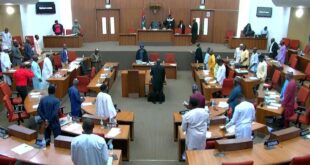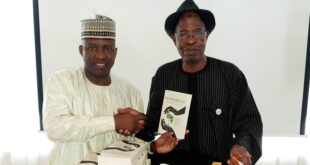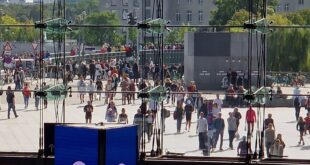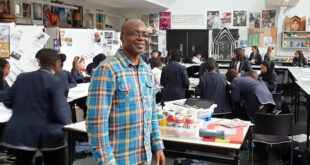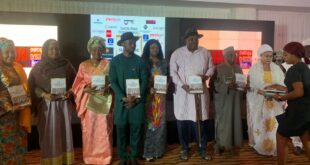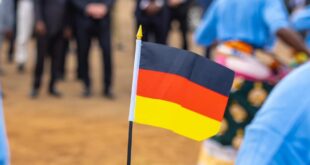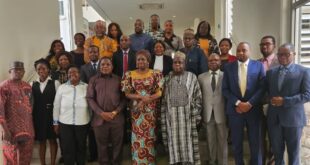Editors of the news agency IRIN* sketch out the gloomy-looking horizon in five African countries in the new year.
Congo unravels
You know the situation is bad when people start fleeing their homes, and it doesn’t get much worse than the Democratic Republic of the Congo.
Here, violence in its eastern provinces has triggered the world’s worst displacement crisis – for a second year in a row. More than 1.7 million people abandoned their farms and villages this year, on top of 922,000 in 2016. The provinces of North Kivu, South Kivu, Kasai, and Tanganyika are the worst affected and the epicentres of unrest in the country.
New alliances of armed groups have emerged to take on a demoralised government army and challenge President Joseph Kabila in distant Kinshasa. He refused to step down and hold elections in 2016 when his constitutionally mandated two-term limit expired – and the political ambition of some of these groups is to topple him.

These rebellions are a new addition to the regular lawlessness of armed groups and conflict entrepreneurs that have stalked the region for years. It is a confusing cast of characters, in which the army also plays a freelance role and, as IRIN reported in December 2017, as an instigator of some of the rights abuses that are forcing civilians to flee.
As we enter 2018, more than 13 million people require humanitarian assistance and protection – that’s close to six million more people than at the start of 2017. Over three million people are severely food insecure in the Kasai region alone, their villages and fields looted. Aid is only slowly trickling in. The $812 million appeal for Congo is less than 50 per cent funded. That lack of international commitment represents the single largest impediment to the humanitarian response.
South Sudan – it could get even worse
A much-anticipated ceasefire in South Sudan didn’t last long.
It came into effect at midnight on Christmas Eve, and a few hours later government and rebel forces were fighting around the northern town of Koch in Unity State. The violence hasn’t derailed the peace talks underway in Addis Ababa, but it does point to how difficult it will be for the internationally-backed diplomatic process to shape events on the ground.
The ceasefire is between President Salva Kiir and several rebel groups, but confidence is low that negotiations can bring a quick and decisive end to a war entering its fifth year.
South Sudan has fragmented, with a host of ethnic militias emerging with shifting loyalties. The various members of this so-called “gun class” all want a seat at the table, in the belief that any future agreement will be based on a power-sharing deal and a division of the country’s resources along the lines of the last failed settlement.

The international community lacks leverage and neighbouring countries don’t have the unity of purpose necessary to achieve a broad-based and sustainable peace agreement.
What that means is that more refugees – on top of an existing two million – will continue to pour across the country’s borders as the fighting season resumes.
It also means some seven million people inside the country – almost two thirds of the remaining population – will still need humanitarian assistance; hunger will also continue to threaten millions as a result of the war, displacement, and collapse of the rural economy. And yes, there will be the threat of renewed famine.
One final ingredient in the brew of despair is that the humanitarian community’s access to those in need will be constrained by both the prevailing insecurity and the government’s cynical taxation of aid operations.
CAR – where humanitarians fear to tread
There are many reasons why Central African Republic was officially the unhappiest country in the world in 2017.
You can start with the 50 per cent increase in the number of displaced, bringing the total to 633,000 people. Then there are the more than two million hungry people, and the half a million who have figured it’s just too hard to stay and have left for neighbouring countries.
It’s not much fun being an aid worker either. In November another humanitarian worker was killed in the north of the country, bringing to 14 the number to have died in 2017. The level of violence has forced aid agencies to repeatedly suspend operations as their personnel, convoys, and bases are deliberately targeted.
Behind the insecurity is a four-year conflict between competing armed groups that neither a weak government nor an under-staffed UN peacekeeping mission can contain. It pits mainly Muslim ex-Séléka rebels against Christian anti-Balaka, but some of the worst fighting has its roots in the splintering of the Séléka coalition and a feud between former allies.
The violence across the country boils down to the lucrative control of natural resources and the taxes the groups raise from checkpoints. Such is the insecurity that the government’s writ doesn’t even cover all of the capital, Bangui.
Libya: Africa’s giant holding cell
An AU-EU summit at the end of 2017 seemed to offer a glimmer of hope for the 700,000 to one million migrants stuck in the nightmare that is Libya.
It produced a plan to repatriate those who want it, and to move others from squalid detention centres into better conditions.
Some flights home did subsequently take off, and a first group (of 162 refugees and migrants from Eritrea, Ethiopia, Somalia, and Yemen) was even evacuated by the UN on 22 December from Libya to Italy. But we’ve yet to see how this scheme will play out, and there are some serious obstacles. Many migrants have nowhere safe to return to, and it’s not clear how a UN-backed government that controls little in the way of territory or popular support will manage to move and protect migrants in a country with multiple governments, militias, and tribes.

That the meeting even got press (in large part thanks to a CNN film of what appeared to be a slave auctions) in an oft-ignored country is a sign of how little the world cares about the mostly sub-Saharan African migrants in Libya, for whom kidnapping, extortion, and rape have become the norm.
European policy has largely focused on keeping migrants from boarding boats in the Mediterranean or reaching their shores – creating a situation that is bad enough for Libyans and shockingly worse for Africans. At the summit, French President Emmanuel Macron mooted a military and police initiative inside Libya, plus UN sanctions for people-smugglers. How this could actually work is anyone’s guess, and it seems unlikely to get at the source of many migrants’ woes: the lack of legal avenues to get out of the desperate situations that brought them to Libya’s hell in the first place.
A year of turmoil in Cameroon
It’s taken just over a year for political agitation in Cameroon’s Anglophone region to turn into armed opposition against the government of President Paul Biya.
Separatism was only a fringe idea until the government cracked down hard on protesters demanding greater representation for the neglected minority region. Now, government soldiers are being killed, Biya is promising all-out war, and thousands of refugees are fleeing into neighbouring Nigeria.
Anglophone Cameroon is becoming radicalised. Refugees recounting experiences of killings by the security forces talk of revenge, and commentators worry that the opportunity for negotiations with more moderate Anglophone leaders – those pursuing a policy of civil disobedience and diplomatic pressure on Yaoundé – may be rapidly shrinking.
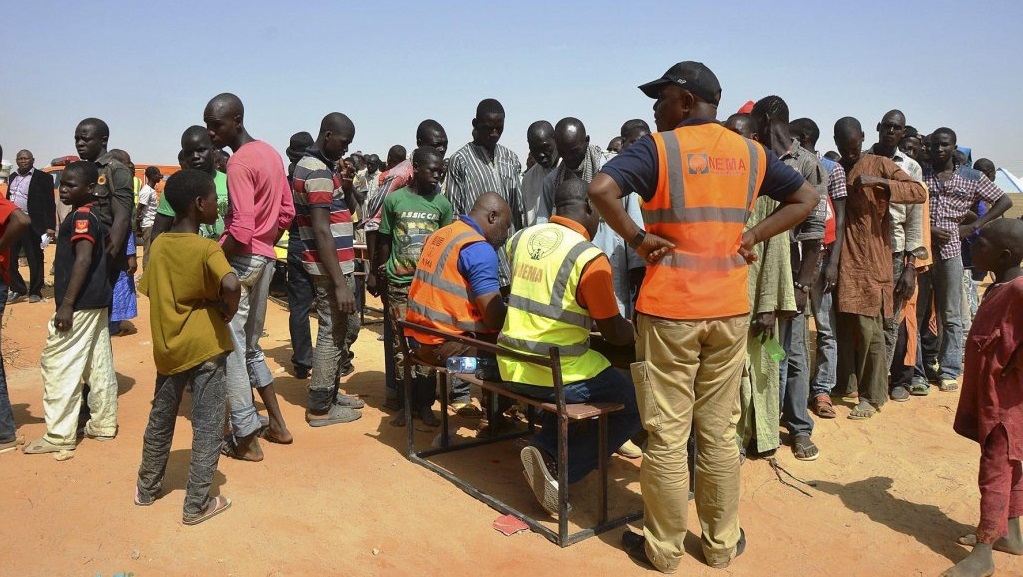
If the government believes there is a military solution to the activists’ demands for an independent “Ambazonia”, made up of the two Anglophone regions of western Cameroon, they may well be mistaken. Where the separatists’ training camps are being established, next to the Nigerian border, is a remote and heavily forested zone – ideal for guerrilla warfare.
Biya, 85 in February and in power for the past 35 years, is standing in elections once again in 2018. The “Anglophone crisis” and the potential of an even larger refugee exodus will not only leave him politically damaged but could be regionally destabilising, especially as Nigeria faces its own separatist challenge.
———————————————–
*IRIN (formerly Integrated Regional Information Networks) is a news agency focusing on humanitarian stories in regions that are often forgotten, under-reported, misunderstood or ignored.
Until 1 January 2015, IRIN was a project of the United Nations Office for the Coordination of Humanitarian Affairs (OCHA). IRIN aims to create greater awareness and understanding of regional issues and events, and to contribute to better-informed and more effective humanitarian action, media coverage and advocacy.
 THE AFRICAN COURIER. Reporting Africa and its Diaspora! The African Courier is an international magazine published in Germany to report on Africa and the Diaspora African experience. The first issue of the bimonthly magazine appeared on the newsstands on 15 February 1998. The African Courier is a communication forum for European-African political, economic and cultural exchanges, and a voice for Africa in Europe.
THE AFRICAN COURIER. Reporting Africa and its Diaspora! The African Courier is an international magazine published in Germany to report on Africa and the Diaspora African experience. The first issue of the bimonthly magazine appeared on the newsstands on 15 February 1998. The African Courier is a communication forum for European-African political, economic and cultural exchanges, and a voice for Africa in Europe.


